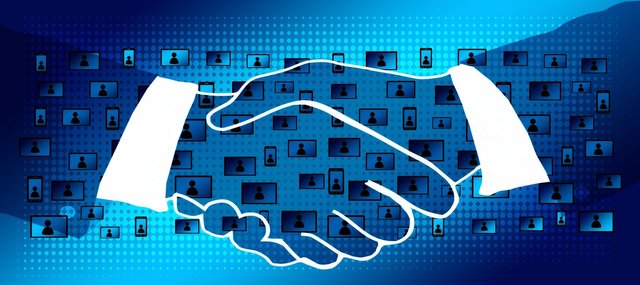Slow but Sure ○ ○ ○ ○ ○ ○ Microsoft introduces BLOCKCHAIN technology to its products.
Three years ago, Microsoft Azure was the first to bring BLOCKCHAIN technology to its cloud services. Now this technology is being integrated into everything else.
The software giant has been quietly building bridges between BLOCKCHAIN and other widely used platforms and platforms, such as Office 365 Outlook, SharePoint Online, Salesforce, Dynamics 365 CRM Online, SAP and even Twitter, said Microsoft's Azure director Matt Kerner. The idea is to allow Microsoft customers to migrate their data from these platforms to cloud services, and from there to BLOCKCHAIN networks.
Why is it going towards the technique of BLOCKCHAIN?
With high availability of BLOCKCHAIN, its ability to collect data from multiple companies uniformly and widely is one of the competing benefits of distributed computing (DLT) technology in a cloud environment such as Azure, according to Microsoft. Thus, the possibility of extracting data from all types of views is unlimited, according to the company.
Thus, the company integrates tools such as Microsoft Flow and Logic Apps - which provide hundreds of connections between thousands of applications - in the BLOCKCHAIN -based Azure Workbench, a service launched in May to make BLOCKCHAIN
easier to create. So everything is part of the evolution of large data. Kerner pointed out that cloud computing enabled the previous sections within the same company to exit their data silos and collaborate in other data sets, increasing intelligence through automated learning (ML) and artificial intelligence (AI).
Kerner told CoinDesk:
"BLOCKCHAIN enables us to move on to the next step - enabling a data set to be transparently transferred to third parties. This actually improves the way transactions are performed. We also believe the same applies to data analysis. "
Going back, many argue that data is now the most valuable natural resource in the world. As the race progressed to demonstrate the best way to analyze data, companies started moving towards their sole goal of organizing and coordinating data to run artificial intelligence algorithms. But with BLOCKCHAIN, you can get structured and free data for free, and as Kerner said:
"What BLOCKCHAIN
is doing is creating multi-partner businesses, emerging from the traditional template for email, phone calls and spreadsheets, to give us one system with one view through data that all participants can count on and trust"
Looking ahead, Kerner said bringing in huge amounts of unstructured data in a context that could benefit from it, and even share it, would make a huge difference. As even the most competitive competitors can benefit from this system and find new sources of income.
Examples of using BLOCKCHAIN:
A good example of balancing Azure components in a large and complex production environment is Insurwave, which simplifies marine insurance for Maersk's cargo operations. Insurwave, which tracks shipments and modifies real-time insurance premiums, collects all kinds of data, everything from IoT and temperature sensors to check for a storm that will hit the ship, enter a war zone or a crowded area Population. Once this data is shared on BLOCKCHAIN, Power BI, a business analytics tool from Microsoft, can be used to gain insights into shipping operations.
Thus, the expansion of the workflow and the ability to track real-time elements and share data, such as: Internet data objects using BLOCKCHAIN, have made global trade and supply chain the first to chase new domains. From a strategic point of view, Insurwave challenges IBM's attempt to dominate world trade, making Maersk a leading company, so to speak.

আপনার আর্টিকেল টা অনেক ভালো লাগলো।
Thx